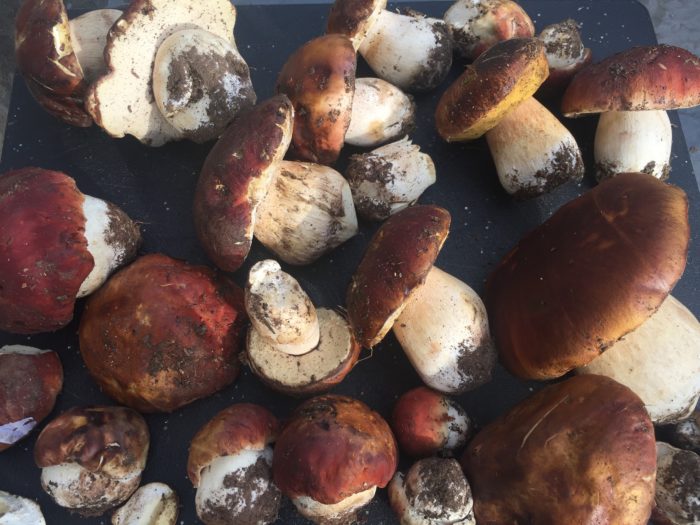
Since living in the mountains, I have had some fantastic friends teach me the beauty of foraging for wild gourmet mushrooms. While some of you prefer other mushrooms, or not mushrooms at all, surely we can all say that we have seen mushrooms before, whether on food, out on a hike, or even in our backyard. Mushrooms are everywhere and have been on earth for an estimated 400 million years. The best part is whether you like to eat them or drop some knowledge on your next date/hike, mushrooming is fun, safe, and easy.
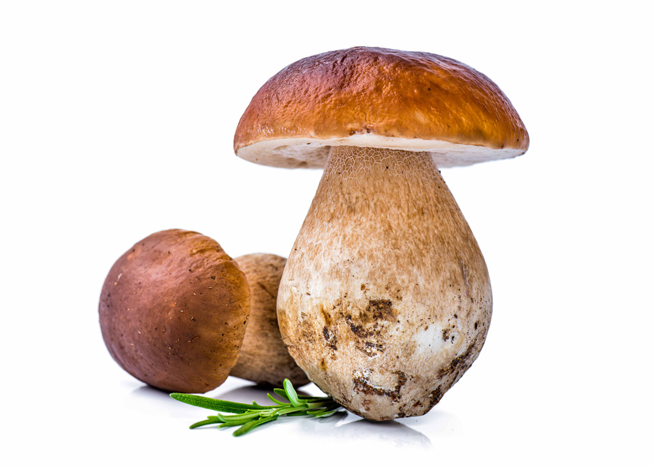
Mushrooms come in all different shapes, colors, and sizes, here are some rules of thumb on how to help you navigate the complex world of mushrooms.

Look first and then pick after positive identification. Too many times I have been out on a hunt and have seen mushrooms people thought were edible or did not identify correctly, so they picked it anyways. To some, this is the moral equivalent of chopping down a tree or shooting an animal and failing to harvest the resource. While this may not be food for you, it could be for a deer or elk! A simple examination of the species will suffice by breaking off a bit of the cap. If the mushroom is entrenched, dig around it and see if you can get a better view.
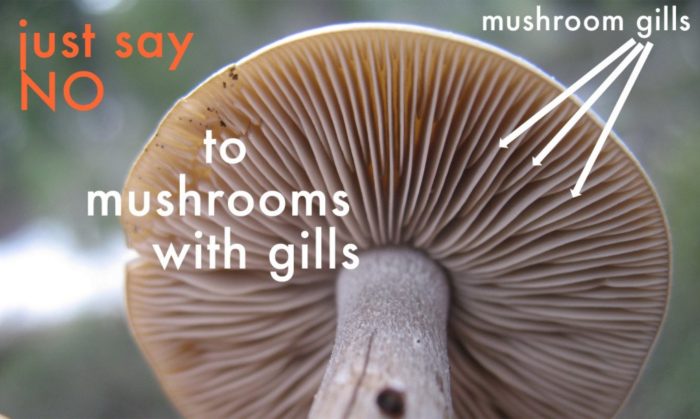
Never pick a mushroom with gills! This is a big rule… If you are interested in eating the mushrooms or even picking them, do not take the ones with gills. Mushrooms with gills are almost always inedible and most importantly, poisonous! Gills have various spatial patterns but ultimately look like an air filter for a car and are located under the cap. The texture is soft and often very brittle.
Only take mushrooms with tubes, spines, and ridges.
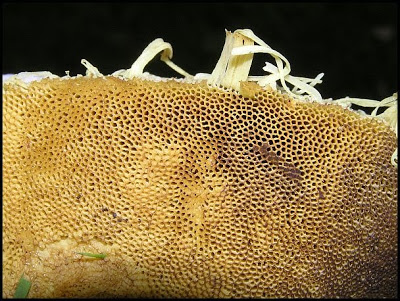
Tubes are like mini straws on the underside of the cap just above the fruiting body. They are mostly very dense and look almost sponge-like. If you look up-close you should be able to see tiny holes in the tubes.
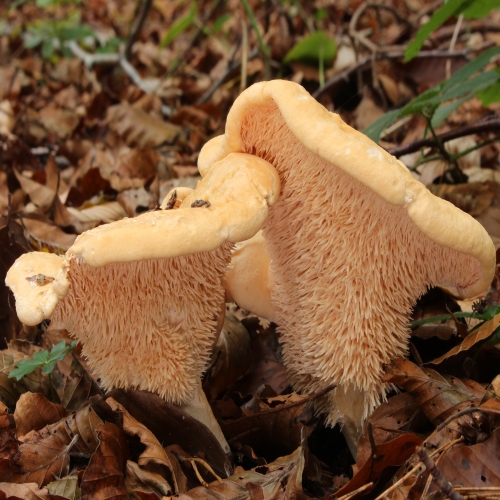
Spines hang off the cap like icicles. They can range in size but can fall out one by one. They are not connected or joined in any way and are cone-like in shape.
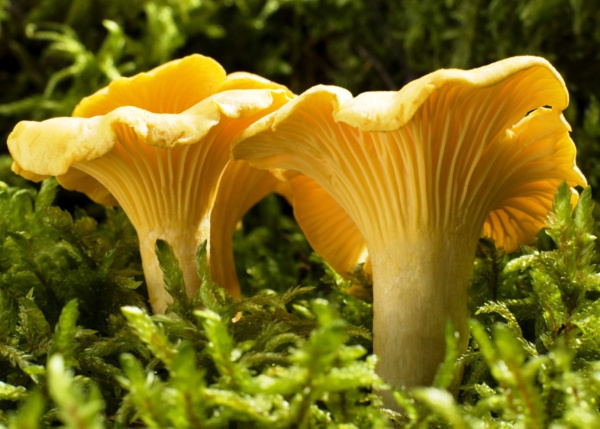
Ridges may look like gills to a novice, but upon further examination, you can determine that ridges are a part of the fruiting body. You cannot rub or pull them off easily. One other defining feature of ridges is that they are cross veined, meaning they will branch vertically and horizontally.
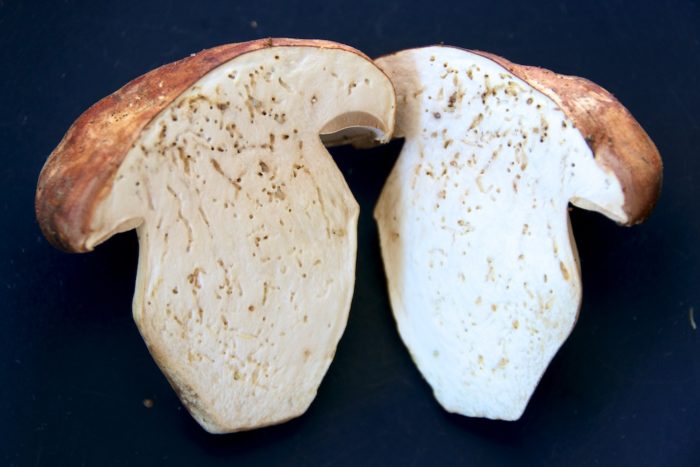
Never eat raw mushrooms and make sure you take a cross-section of the specimen. Let’s be honest here… If you drop something in the dirt chances are you probably will not eat it. Mushrooms come out of the dirt and have a whole bunch of stuff on them. Do yourself a favor and wash/cook them properly. One last piece of advice is before prepping or cleaning a mushroom, make sure to cut it in half (sometimes you need to cut to make sure its the right one). Mushrooms can look good on the outside, but once cut can reveal holes where worms have been (yuck!). If it looks bad, it probably is rotten; do not eat!
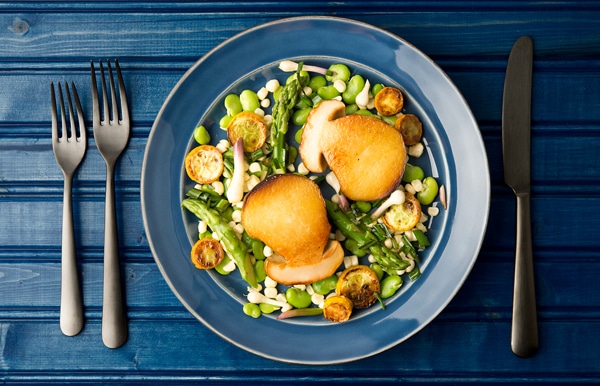
There is a treasure trove under your feet. Mushrooms are everywhere, from the coasts to wooded areas, all the way up to 10,000ft high in the Rocky Mountains. Particular mushrooms that are highly sought after by restaurants can catch a high price, sometimes they can go for an upwards of $40 per pound! They are fun to hunt for on a hike and once positively identified can be delicious to eat! A quick Google search can yield tons of recipes and food pairings for any type of mushroom.
**Full disclosure, I am not a professional mycologist and these are merely an enthusiast’s basic rules for identification and proper harvesting. If you EVER have any doubt about a mushroom, throw it out! (Source: Mushrooming Without Fear, by Alexander Schwab, fantastic book and if you are interested in learning even more highly recommend buying it!)
Mushrooming is NOT “safe and easy”! There are various lookalikes that you can poison yourself with (I don’t mean to sound like a mycophobic), and poisonous boletes too, for example satan’s bolete. And what the heck about those “don’t pick gilled mushrooms” bs?! There are COUNTLESS edible and delicious gilled mushrooms. Button mushrooms, oyster mushrooms, blewits, st. george’s mushrooms honey fungi, enoki, matsutake.. I can go on and on, but you are telling people to be afraid of gilled mushrooms, practically the MOST common types of mushrooms! TL;DR: Mushrooming isn’t way to safe and easy, and “never pick mushrooms with gills” is some mycophobic bs.
Wrong about those gills. This leads to mycophobia
Sorry, I cannot but state that “Never pick mushrooms with gills” is a great bulsheet!